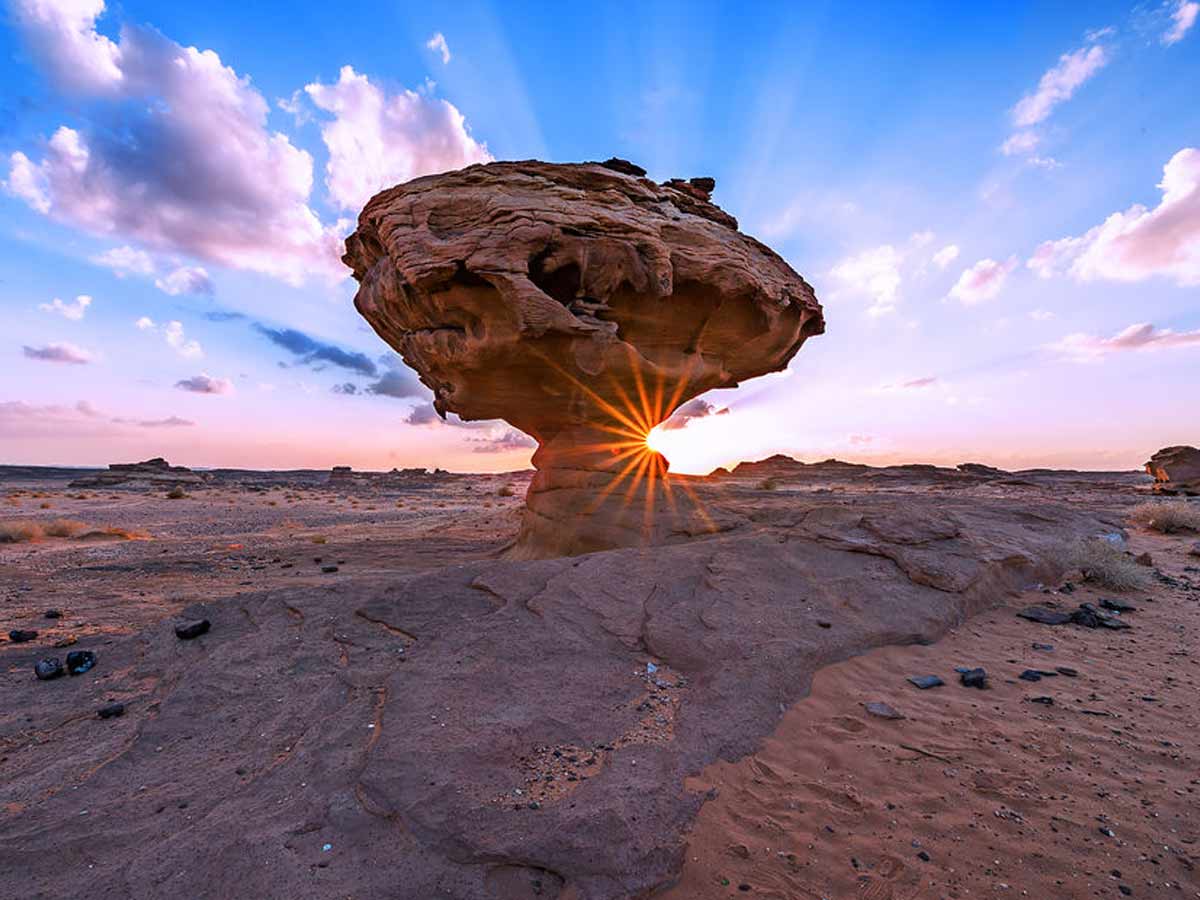The tradition and culture of India are perfectly emitted by the palaces, havelis, and kothis. The palaces of India provide an unmistakable window into the life and times of former royalty, from their stunning architecture and opulent interiors to their enticing cuisines, complex cultures, and exquisite works of art that exemplify the legacy and customs of each former princely territory.
As a result, we choose to spotlight 8 of India’s most stunning and opulent palaces-turned-luxury hotels.
These getaways for the summer offer more than just spectacular views; they also provide an educational experience through their interior decor, which pays homage to famous Indian dynasties.
Umaid Bhawan Palace, Jodhpur
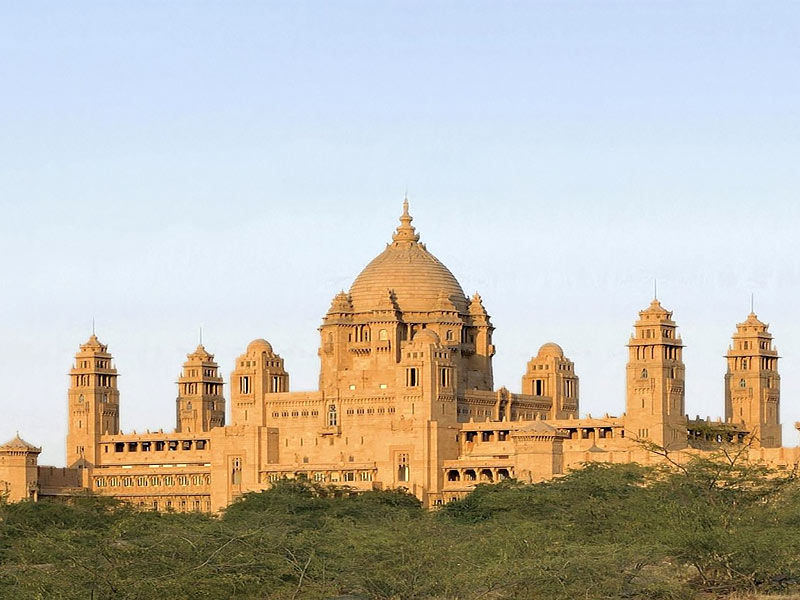
The Taj Group of Hotels manages a portion of the Umaid Bhawan Palace, which is located close to the Mehrangarh Fort in Jodhpur.
The palace, which has 347 rooms and is located on Jodhpur’s highest point, Chittar Hill, is the primary residence of the erstwhile Jodhpur royal family and boasts the distinction of being the sixth-largest private property in the world.
The palace complex was constructed between 1928 and 1943, and it occupies 26 acres of land. The Indo-Saracenic, Classical Revival, and Western Art Deco styles are combined in the palace’s main building.
Rambagh Palace, Jaipur
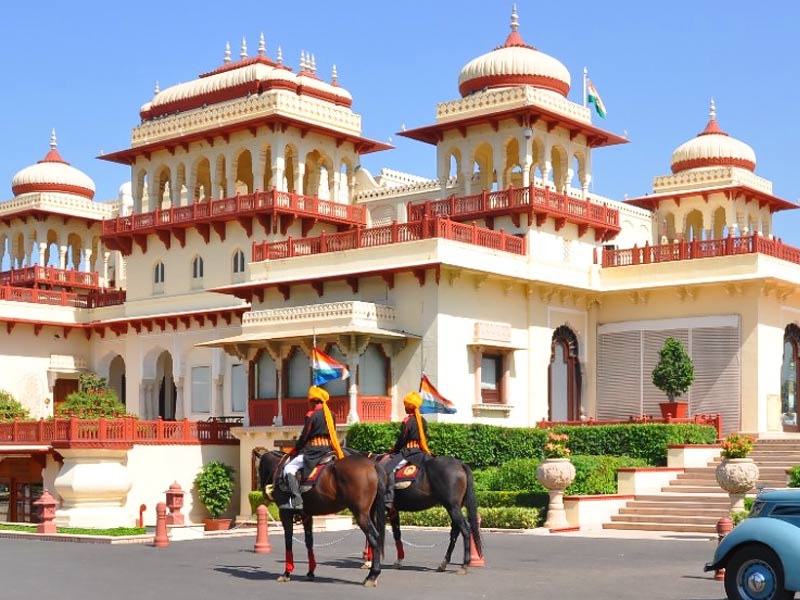
The Rambagh Palace in Jaipur was originally constructed in 1835 as a dwelling for the queen’s favorite handmaiden before becoming the home of Maharaja Sawai Man Singh II & Maharani Gayatri Devi.
The 47-acre property is referred to as the “Jewel of Jaipur” and is now a magnificently renovated Taj property. The palace, which features hand-carved marble “jalis,” sandstone balustrades, cupolas, and “chattris,” as well as regal Mughal Gardens, is a wonderful illustration of Rajpur traditions and legacy.
Udai Bilas Palace, Dungarpur, Udaipur

The first section of the palace was built by Maharawal Udai Singhji II in the 19th century on the bank of the Gaibsagar Lake. The Mahali, which now operates as a heritage hotel, is divided into three main pillars: Raniwas, Udai Bilas, and Krishna Prakash.
The palace breathes Rajput history through every wall thanks to its intricate 20th-century art deco interiors, sculptured pillars, bracketed windows, marble friezes, and exquisite arches and balconies.
Shiv Niwas Palace, Udaipur

The crescent-shaped palace, which was meticulously renovated to become a luxury resort hotel, was constructed in the early 20th century during the reign of Maharana Fateh Singh (r. 1884–1930). The palace’s interior is decorated with paintings, glass mosaics, and inlay work made of ivory and mother-of-pearl.
It was constructed using traditional Rajput architectural designs. Before being transformed into an opulent hotel, it was only accessible to dignitaries and visitors of the House of Mewar.
City Palace, Udaipur
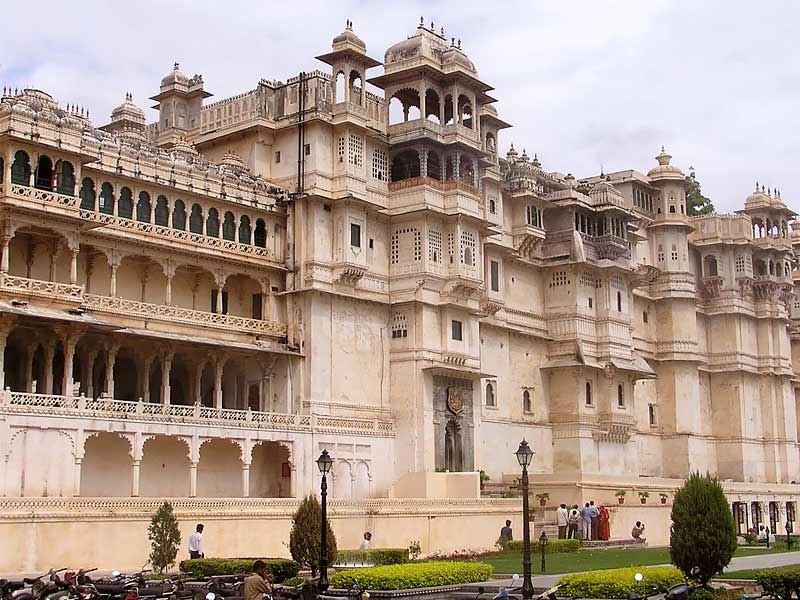
The Udaipur City Palace, which is a blend of Mughal and Rajasthani architecture and is entirely made of marble and granite, is tucked away on the shores of Pichola Lake.
The palace was built over more than four centuries and is made up of several smaller palaces that are interconnected by a complex network of quadrangles and corridors. The interiors pay homage to the Rajput history with elaborate inlay work, tiny paintings, silver, marble, mirror, and colored glass crafts.
Samode Palace, Jaipur
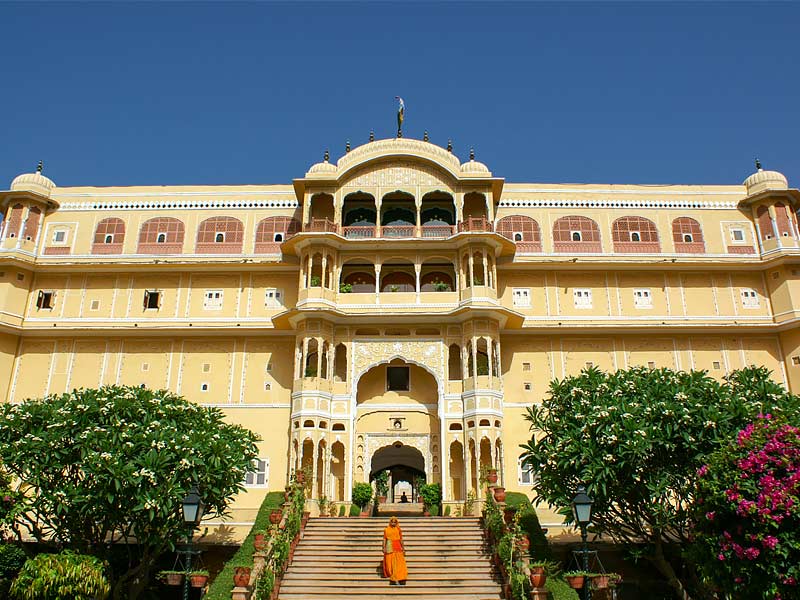
The Samode Palace is located on the fringes of Samode hamlet, just north of Jaipur, and is tucked away in the Aravalli mountain range. The palace was built to serve as a Rajput fort and is a gracious representation of what the Rajasthani monarchy stands for.
The 475-year-old sandstone building is a fusion of Mughal and Rajasthani architectural traditions, and it was transformed into the magnificent palace it is today during the reign of Rajasthan’s Chief Minister in the 19th century, the nobleman Rawal Berisal.
Also, Read 15 Top Summer Vacation Spots In India
Jehan Numa Palace, Bhopal

The Jehan Numa Palace was constructed in 1890 and is a combination of British Colonial, Italian Renaissance, and Classical Greek architecture. It is located on the slope of Shamla Hill. This little royal residence in Madhya Pradesh is packed with contemporary comforts.
This palace perfectly evokes the atmosphere of the Nawab Begums of Bhopal with a lovely mosaic fountain, imperial gardens, and a trotting track for thoroughbred horses. This palace is the ideal retreat for the luxury hunter, with its blushing pink rose bushes, red bougainvillea, shaded mango and jamun trees, and towering palm palms.
Gogunda Palace, Udaipur
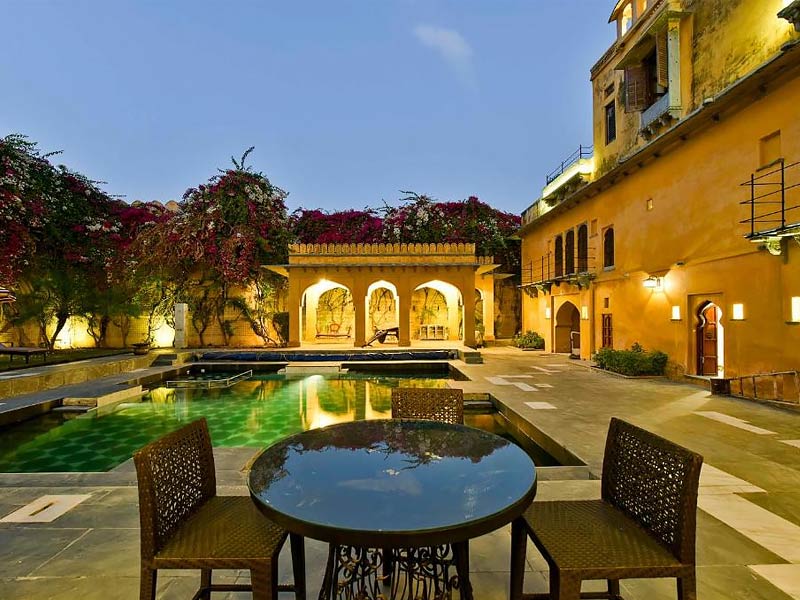
The magnificent Gogunda Palace Hotel, which was constructed in the 16th century and is now operated by Amritara Private Hideaway, was formerly Maharana Pratap’s royal fortress-palace.
This lovely 2.5-acre property offers breathtaking views of the Aravalli Range and is a fascinating example of how to live luxuriously while immersed in the past. The palace’s original flooring, murals, woodwork, and external construction are all examples of medieval Mewari architecture, making it a history enthusiast’s dream come true.























